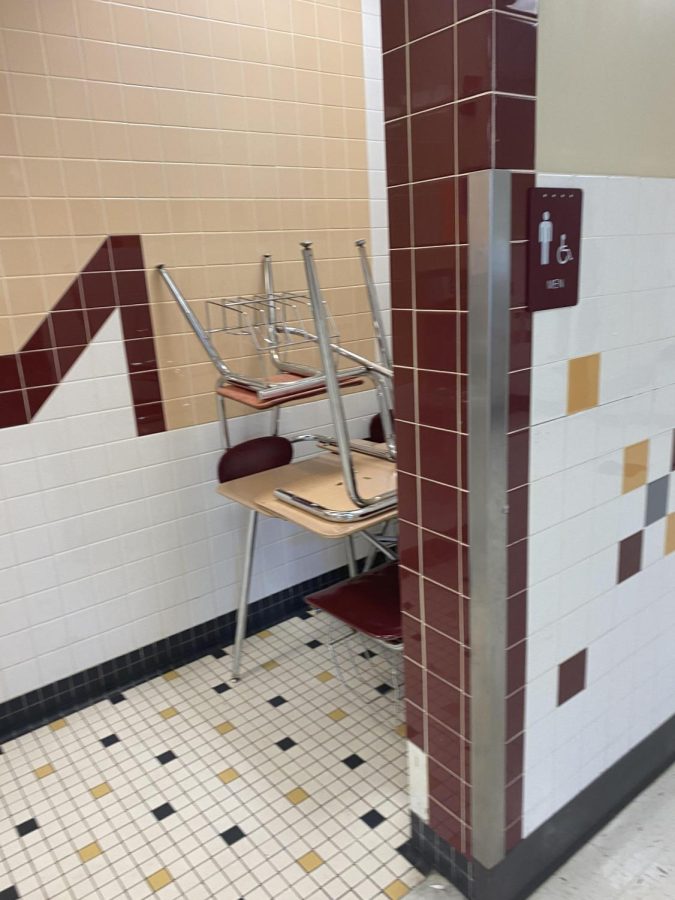Promoting School Hygiene: Building a Healthy Learning Environment
June 2, 2023
Maintaining proper hygiene in schools is crucial for creating a safe and healthy environment for students, teachers, and staff. By prioritizing school hygiene practices, educational institutions can minimize the spread of germs, prevent illness, and enhance overall well-being.
According to Portsmouth High School nurse, Gina LaPage, the overall hygiene of the school has room for improvement, and she recognizes the custodians’ efforts, but “There just aren’t enough to help with the upkeep of the school.”
Schools are bustling centers of activity, where large groups of individuals gather daily. Good hygiene practices play a pivotal role in reducing the risk of infections and promoting well-being among students and staff. Here are a few reasons why school hygiene should be a top priority according to cdc.gov:
- Disease Prevention: Schools can be breeding grounds for germs and infectious diseases. By practicing good hygiene habits, such as regular hand washing, proper sanitation, and cleaning routines, schools can significantly reduce the transmission of illnesses like colds, flu, covid, and gastrointestinal infections.
- Academic Performance: A clean and hygienic environment positively impacts students’ concentration, cognitive abilities, and overall academic performance. When students are healthy, they can focus better on their studies, leading to improved learning outcomes.
- Psychological Well-being: A clutter-free and well-maintained school environment contributes to students’ mental and emotional well-being. Cleanliness promotes a sense of pride, belonging, and motivation, creating a positive atmosphere that enhances student engagement and happiness.
Head PHS custodian, Arthur Ashley, has been working at PHS for almost 25 years and prides himself and his team in their efforts to keep the school as clean and hygienic as possible. Regarding the understaffed issues of PHS, Mr. Ashley claims that the lack of desire to do laborious work has caused issues with employment. As of right now, the custodial team is short two people every day, thus resulting in the overworking of the school’s custodians, according to Mr. Ashley.
The government standard is for 26-28,000 sq ft to be cleaned per person, but at PHS, custodians are cleaning 36-38,000 sq ft per person due to a lack of help.
PHS needs its students to help lessen the workload by “always picking up after themselves,” states Ashley.
According to Ashley, there is also an egregious amount of waste that comes from the school, thus resulting in even more efforts being applied by the school’s custodians.
“Recycling is a big thing. If we could get that program set that would be very important,” says Ashley.
Jennifer Ring has been a librarian at PHS for roughly five years and is glad that things have returned to a sense of normalcy following the pandemic. However, there is a new issue for Ring: messes left by students.
Lunch is a difficult situation for Ring, as many students frequent the library to enjoy their lunch and socialize. “There’s a lot of eating that happens everywhere all the time”, said Ring.
Ring has no problem with that in particular, rather the messes which are left behind. She wishes to help students find books and navigate the library, not clean up after them. Ring simply wishes for students to “Be more respectful of the shared spaces when you’re eating.”
Joshua Carter, a PHS sophomore, has witnessed the contents of the boys’ bathrooms at the school. Specifically, the Social Studies bathroom which had been shut down due to vandalism.
According to Carter, there is often writing on bathroom stalls, tampons stuck to walls, irregular objects in toilets, and generally unclean bathrooms. He claims that the custodians seem to be doing well in regard to the upkeep of the school’s cleanliness, and it’s just the understaffing that makes proactive cleaning more difficult.
“I feel as though the custodians take good care of maintaining the school, it’s just the students that could be doing more,” said Carter.
Here are some key measures for promoting school hygiene according to cdc.gov:
- “Hand Hygiene:
Encouraging proper hand-washing practices is essential to prevent the spread of germs. Schools should provide accessible handwashing stations with soap and water or hand sanitizers throughout the premises. Educating students about the importance of handwashing and when to do it (before meals, after using the restroom, etc.) is crucial.
- Sanitation Facilities:
Maintaining clean and functional sanitation facilities is of utmost importance in schools. Regular cleaning and disinfection of restrooms, ensuring the availability of toilet paper, soap, and hand dryers, and addressing any plumbing issues promptly are essential steps to promote good hygiene.
- Cleaning and maintenance:
Implementing a comprehensive cleaning and maintenance schedule is vital to keep classrooms, corridors, and common areas clean. Regular sweeping, mopping, dusting, and disinfection of frequently touched surfaces such as desks, doorknobs, and light switches should be prioritized. Collaborating with professional cleaning services can ensure a thorough and efficient cleaning process.
- Waste Management:
Proper waste management within schools helps maintain cleanliness and prevent the spread of diseases. Schools should have designated waste bins for different types of waste, such as recyclables and organic waste. Regular garbage collection and recycling initiatives can instill environmental consciousness among students.
- Health Education:
Incorporating hygiene education into the curriculum provides students with the necessary knowledge for maintaining proper hygiene. Topics such as handwashing techniques, oral hygiene, etiquette, and the importance of clean environments should be incorporated into the teachings of students.”











